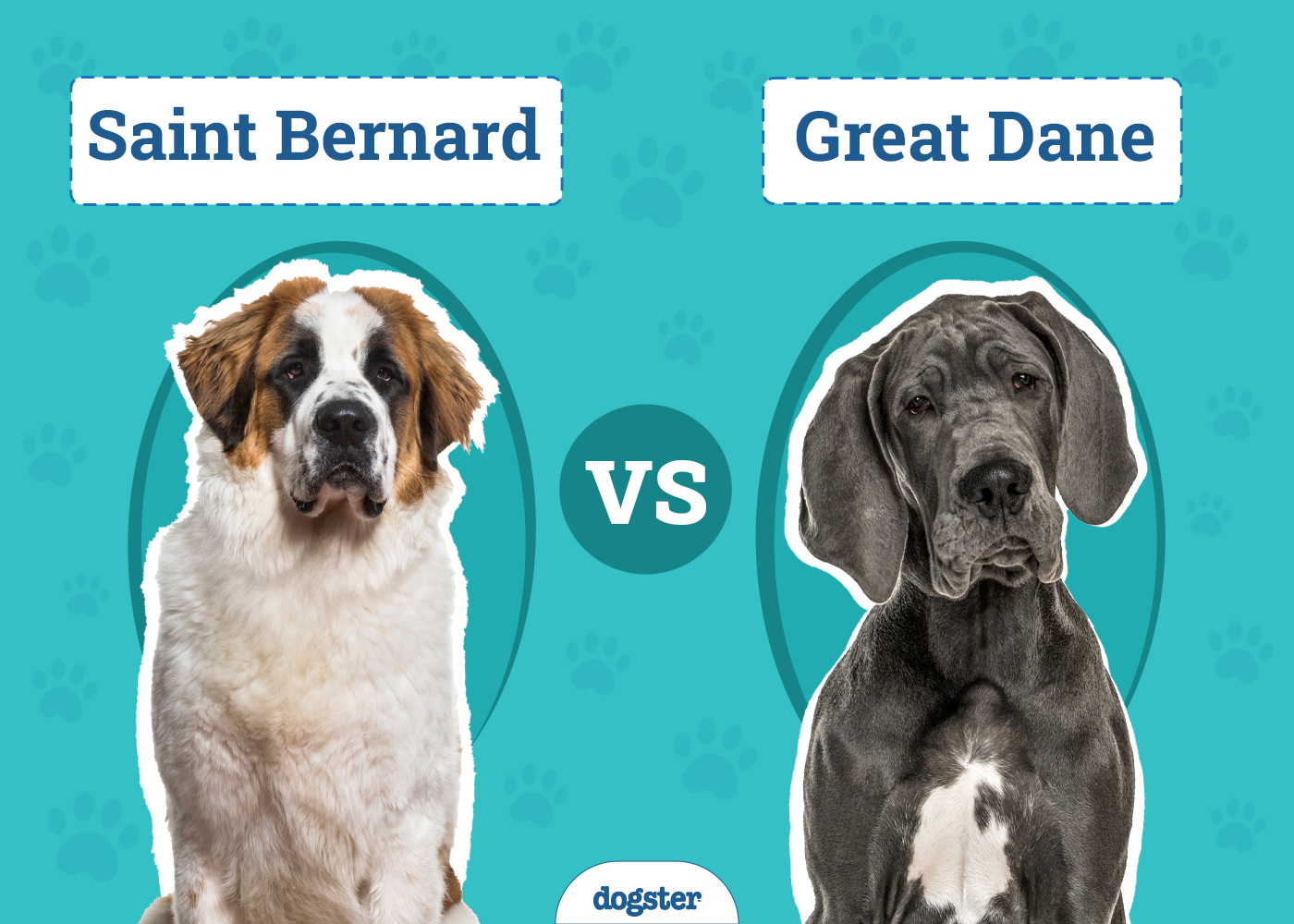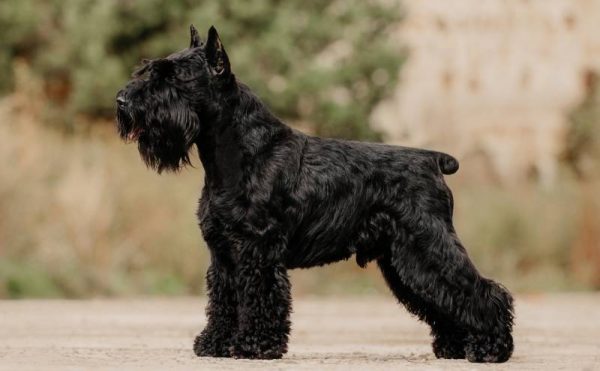In this article
View 3 More +In the world of fascinating canine breeds, two majestic creatures that stand out are Saint Bernard and the Great Dane. Both of these breeds have a rich history as working dogs, and it is clear to see how their strength and loyalty have earned them a special place in our hearts. In terms of size, they are both impressive, with the Great Dane standing tall and the Saint Bernard packing a punch as the heavyweight.
Whilst their temperaments have similarities, with both known for their friendly and easy-going natures, it is essential to consider their unique characteristics when deciding which breed is right for you. Read on as we explore the history, appearance, temperament, and suitability of the Saint Bernard and the Great Dane, and discover which breed may be a match for you.

Visual Differences
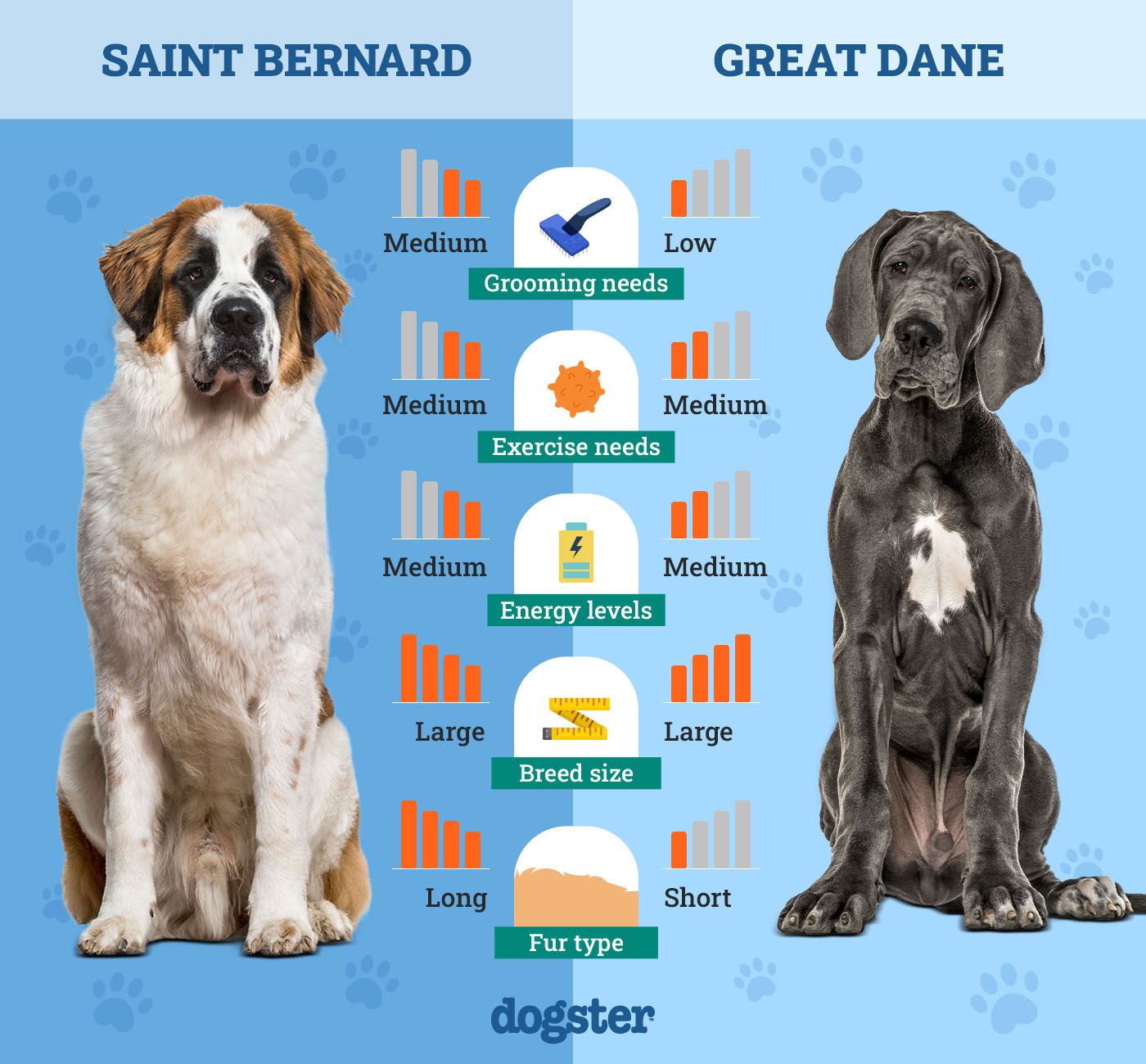
At a Glance
- Average height (adult): 25½–27½ inches
- Average weight (adult): 140–180 pounds
- Lifespan: 8–10 years
- Exercise: 1+ hours a day
- Grooming needs: Moderate
- Family-friendly: Yes
- Other pet-friendly: Often
- Trainability: Smart, quick to learn
- Average height (adult): 28–38 inches
- Average weight (adult): 110–180 pounds
- Lifespan: 7–10 years
- Exercise: 2+ hours a day
- Grooming needs: Low
- Family-friendly: Yes
- Other pet-friendly: Often
- Trainability: Intelligent but some can be stubborn

Saint Bernard Overview
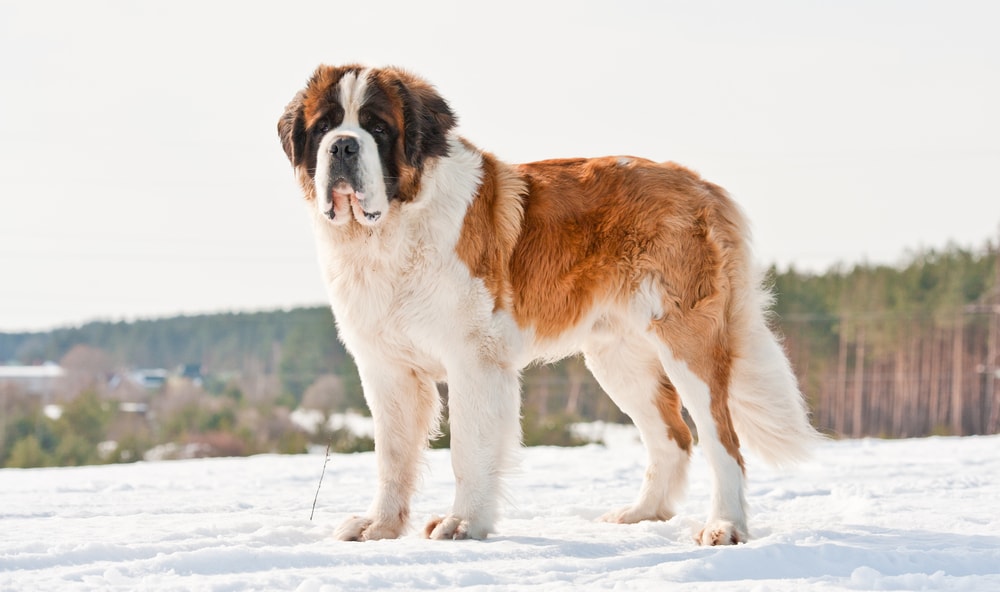
The Saint Bernard is a large breed of dog with a long and fascinating history. Almost 1,000 years ago, a monk named Bernard of Menthon founded a hospice high up within a snowy pass in the Alps to aid pilgrims over a difficult and perilous stretch on their arduous journey to Rome.
During winter, the pass (at 8,000 feet above sea level) was frequently covered in snow drifts as deep as 40 feet and regularly claimed the lives of unprepared travelers caught out by the brutal weather.
Over several centuries the monks who ran the hospice developed powerful working dogs that could locate and save hapless wayfarers buried by the snow. Over the years, they have been credited with saving the lives of over 2,000 people crossing Alpine passes. Bernard of Menthon went on to become a saint, and it is for the eponymous purebred dog, the Saint Bernard, that he is best remembered today.
Saint Bernards are powerful and intelligent dogs, and whilst their exact ancestry is not known, they probably come from mixing local farm dogs with some kind of mastiff brought to Switzerland by the Romans, resulting in a breed that was strong, agile, and able to withstand extreme cold and high altitudes.
Over the centuries, Saint Bernards have been carefully selected and trained for their rescue work, and they have become known for their unwavering loyalty and bravery. Prior to the 1830s, Saint Bernards were short-haired but after a string of savage winters in which many dogs died, the monks were finally persuaded to breed dogs with longer coats to give these tough dogs improved protection against the harsh natural elements.
Temperament
Saint Bernards are gentle giants with a sturdy, loyal temperament. As an iconic breed, Saint Bernards have a reputation for being friendly and affectionate. These large dogs will be sure to captivate hearts with their loving personality and loyalty to their owners. Saint Bernards are happiest when they are around people, making them the perfect companions for families or individuals looking for a protective friend.
This is why they do best in homes with plenty of human interaction during the day and lots of room to roam inside or out in the yard. They also require ample exercise, such as daily walks or jogs. Because of their size and strength, Saint Bernards need firm yet gentle training from puppyhood on so that they can learn respect for boundaries early on.
Health
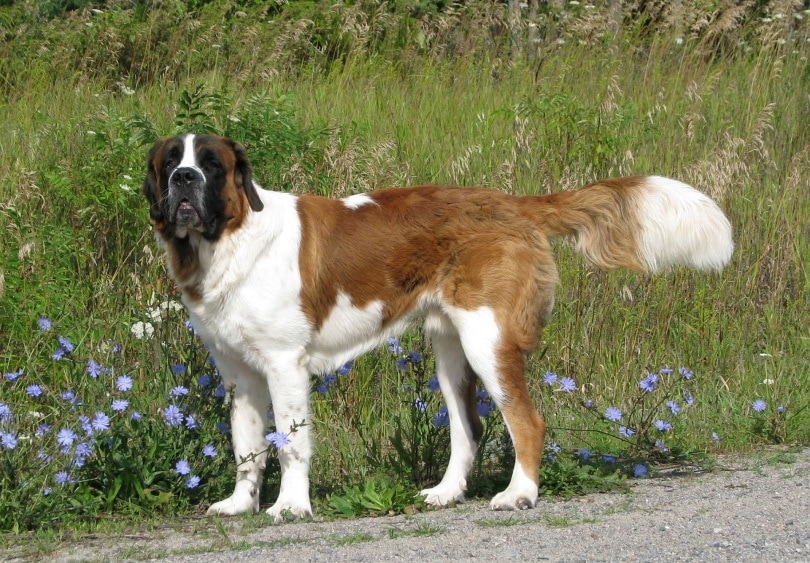
In general, Saint Bernards, like many large breeds, have shorter lives than dogs on average. Nevertheless, they are overall healthy dogs, but they are susceptible to a few ailments that you have to watch out for and be prepared to deal with. Saint Bernards can inherit a defect in the rear hip joints, which over time causes the femur and hip joint bones to rub leading to inflammation and pain.
Treatment varies depending on the severity—from managing with supplements and medications to corrective surgery. Puppies as young as 16 weeks can be X-rayed in a procedure to identify whether they are likely to develop hip dysplasia so that early treatment can be given.
Saint Bernards are also predisposed to osteosarcoma, an aggressive bone cancer, and lymphosarcoma, a cancer that develops in the lymph nodes before spreading to other parts of the body. Treatment options include chemotherapy or surgery. Saint Bernards, because of their deep chests, may also develop bloating, which occurs when their stomach fills up with gas created during digestion and makes their abdomen distended.
In extreme cases, this can turn into a sudden life-threatening condition called gastric dilatation-volvulus (GDV), which occurs when a gas- or fluid-filled stomach twists and cuts off blood circulation to the stomach and other organs.
While all of this sounds very worrying, remember that Saint Bernards overall are considered a healthy breed without major issues, and most of them live full lives as loving companions and valued members of a family. A family vet is a key component to a healthy lifestyle for your dog. Regular visits to the vet will allow them to get to know your dog and spot potential health issues early.
Public Image
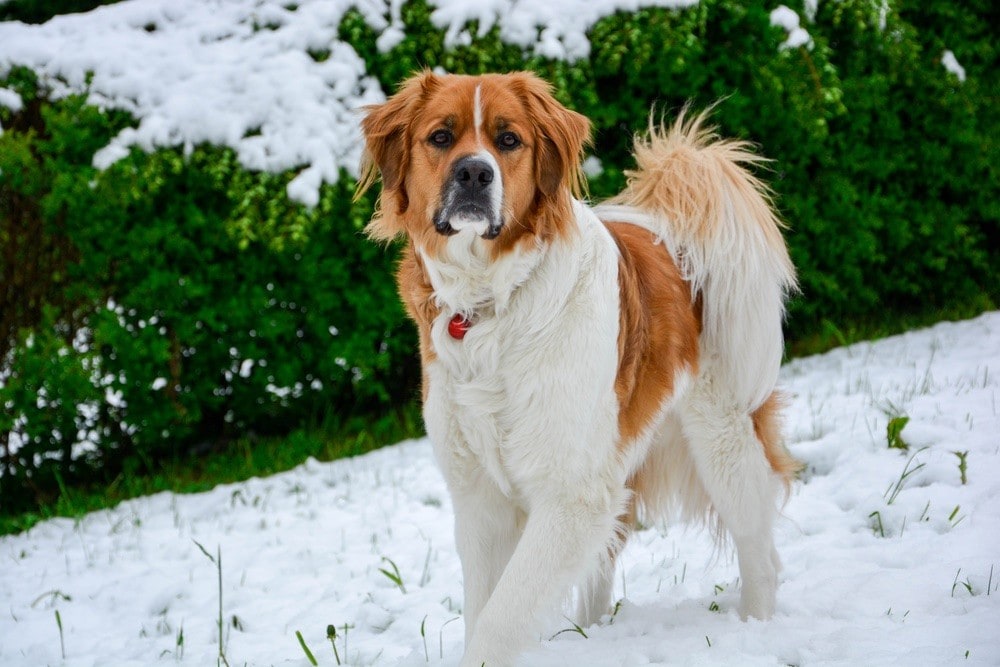
Saint Bernards are portrayed in everything from adverts to cartoons as always wearing a small barrel of brandy under their necks, ready to rejuvenate travelers. Although it is a nice image and story, working Saint Bernards never revived rescued frozen pilgrims with spirits.
The idea of neck barrels filled with brandy probably comes from the painting Alpine Mastiffs Reanimating a Distressed Traveler by Edwin Landseer, depicting two St. Bernards carrying small barrels of brandy.
Suitable For
In more recent times, they have gained popularity as family pets due to their calm and gentle nature; they are generally good with children and make excellent companion animals, making them suitable for families. They are also a good choice for first-time dog owners due to their intelligence and willingness to please.
However, it is important to note that they do require a lot of space and moderate exercise, so they may not be suitable for apartment living or owners with limited time to devote to daily walks and play.
Saint Bernards are a calm breed that are not frequent barkers and are very patient with small children. They are very attentive to the humans around them and want to be part of whatever is going on. They are huge and do need quite some space, but they are not high-energy dogs so don’t require a spacious backyard or open spaces.
As such, Saint Bernards are suitable for owners who have a lot of time to spend with their dog, have an expansive home, and are looking for either a companion or another member of the family.

Great Dane Overview
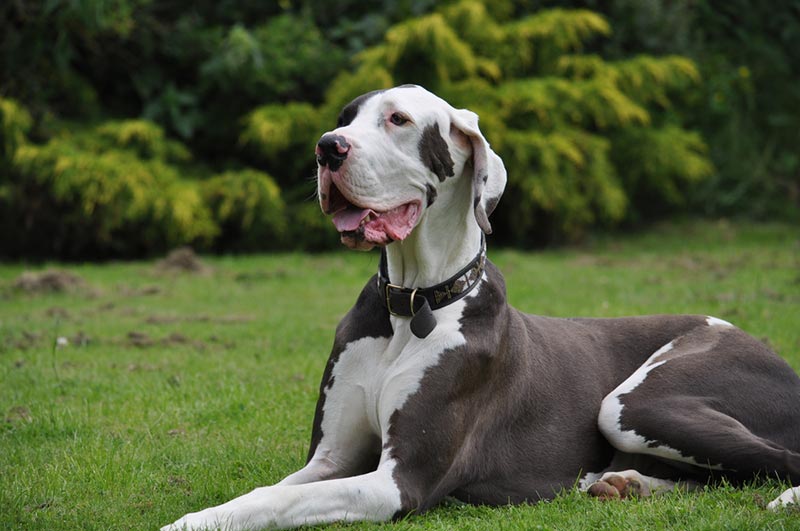
There is some mystery surrounding the origins of this breed. Despite their name, the dogs originate from Germany and not Denmark. Ironically the breed started in the 16th century from imported dogs that the Germans called “The English Hound.” They imported long-legged mastiffs from England to crossbreed with their hunting packs.
They were used as catch dogs that went in behind the other hunting hounds to hold the catch in place for the huntsman. With the development of firearms, hunting changed, and so did the canines used, with many of them falling out of vogue.
English Hounds, which had been plentiful in Germany and prized by the nobility as guard dogs, became rarer. In 1878 a committee was formed in Berlin which revised the name to the Deutsche Dogge (the German Mastiff). German breeders then tried to export this dog under this name, but due to rising political tensions and animosity towards Germany, the breed was renamed in France as the Grand Danois, or the Great Dane.
Temperament
Great Danes are gigantic and imposing with their tall stature and big heads. But this fearsome physical stature is at odds with their friendly nature; known for wanting physical affection from owners the breed is often called a “gentle giant.”
Generally, Great Danes are well disposed to other dogs in the same household, other non-canine pets, and the humans they are familiar with. Despite being descended from hunting dogs, they are not very aggressive and don’t have a strong instinct to chase prey.
For a large, powerful breed like a Great Dane, socialization and obedience training are a must to ensure that the dog fulfills its potential as a ready-to-please, friendly, and sociable dog that is good with children.
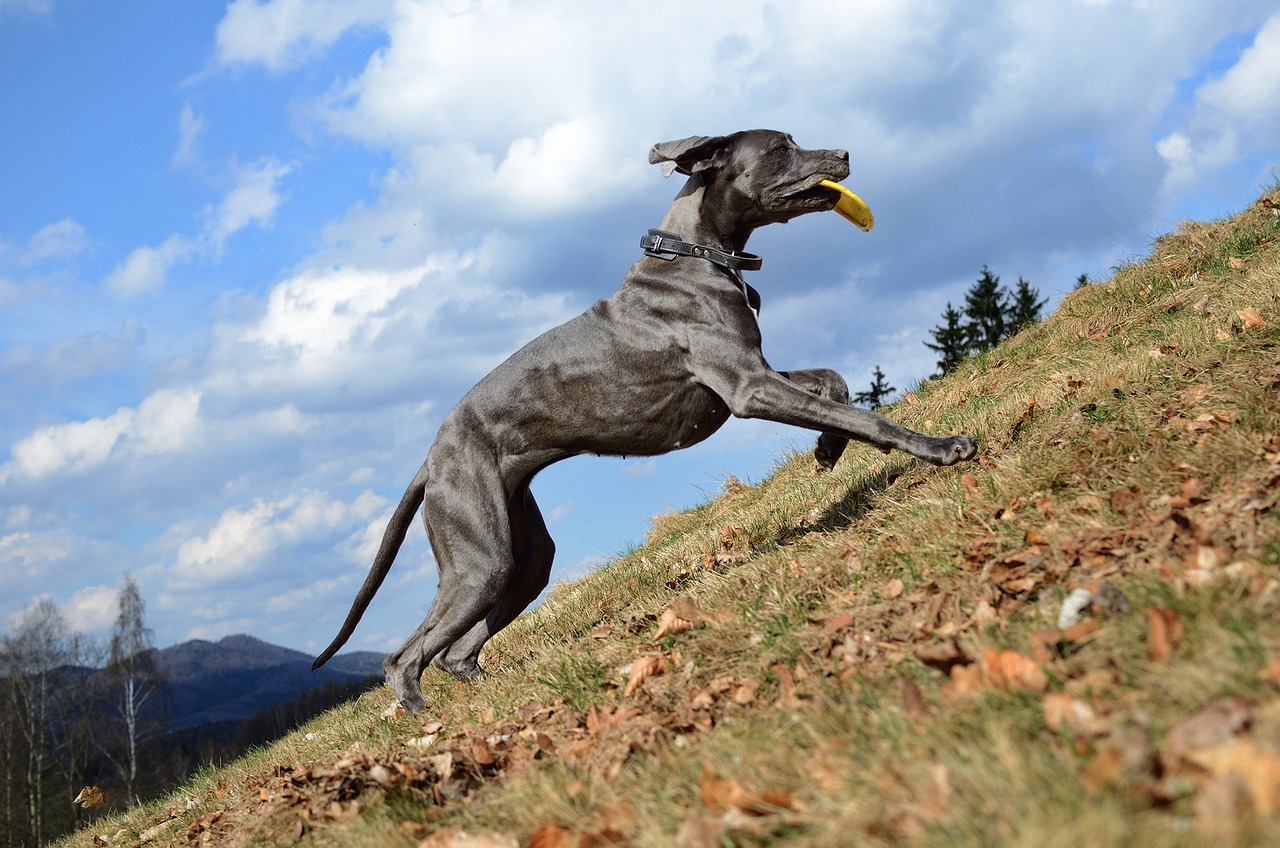
Health
Great Danes, just like other big dogs, pay for their size with greater susceptibility to certain conditions and problems. Like Saint Bernards, Great Danes also suffer from hip dysplasia and bloating, but in the case of Great Danes, bloating is a leading cause of premature death.
When a Great Dane gets gas, often caused either by overeating or over-drinking before exercise, it can cause the stomach to twist, trapping the gas and cutting off the blood supply leading to toxic shock and death within 24 hours.
Also, like other large dogs such as Saint Bernards, Great Danes are prone to osteosarcoma or bone cancer. But “happy tail” syndrome—injuries to the tail—on the other hand, are more a fact of life for a massive dog with a long tail that it lags to wag frequently and furiously, often whipping it hard into objects, than a genetic predisposition.
Great Danes, like all giant breed dogs, will be more prone to health problems if they grow too quickly, and therefore as puppies, they need special nutrition to ensure they grow at a healthy rate. A lot of the health issues discussed above can be affected by the dog’s diet, so Great Danes, more than the average dog, need to maintain a healthy diet.
Public Image
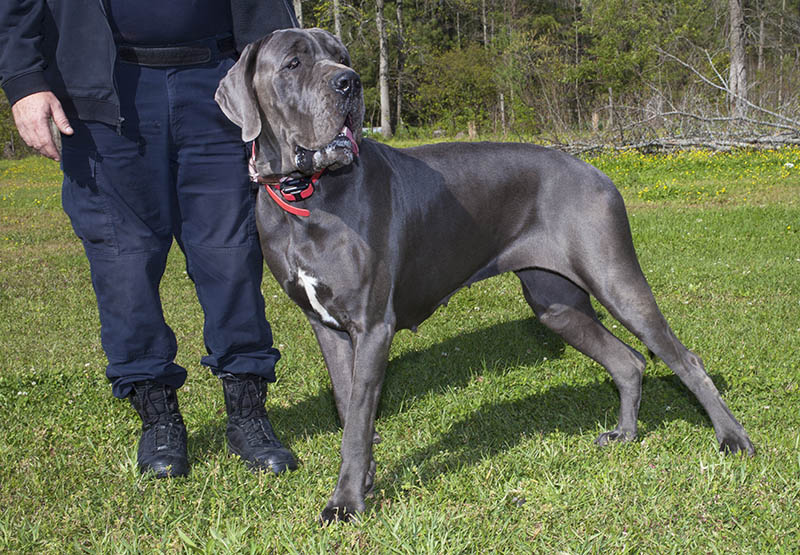
Great Danes have a reputation for being some of the sweetest dogs around. A great example is Marmaduke from the famous comic strip; he is presented as fun-loving, loyal, and kind. However, due to their massive size, not all owners take proper precautions when training or socializing their Great Danes. This can lead to behavior issues, such as jumping on people or barking excessively, that can give these dogs a bad reputation unfairly.
It’s crucial for owners to remember that with proper training and care, these majestic animals can be just as well-behaved as any other breed of dog.
Suitable For
Great Danes are an enormous breed that is both great to look at and to be around. They make good companions and can be ideal large family dogs. They are more prone to barking than Saint Bernards and are also more energetic. This means they are best suited for families with a lot of energy and space. Great Danes are known for their gentle demeanor, playful attitude, and loyal personality.
If you’re thinking about adding one of these regal dogs to your family, it’s vital to consider the size of the eventual adult dog before you bring home a pup. These majestic creatures can grow up to 35 inches tall and weigh up to 180 pounds—so if space is an issue in your home or yard, then a smaller variety may be better suited for you.

Which Breed Is Right for You?
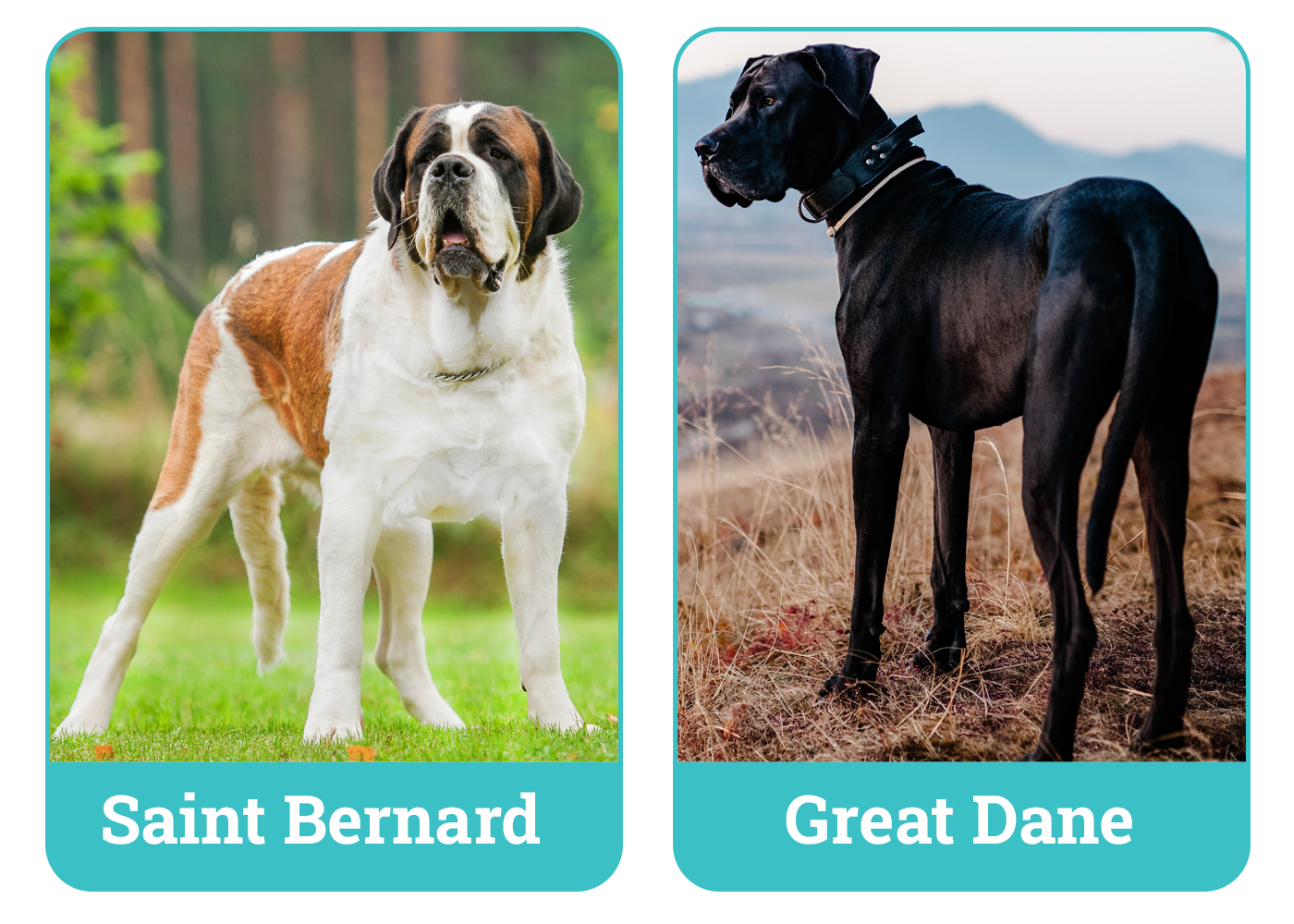
If you are trying to choose between these two imposing, loving, family-friendly dog breeds then you probably have an extremely difficult choice to make. Both dogs, as well as requiring lots of space, have big hearts and will be trusted loving companions. The main difference is the amount of exercise the two dogs need, with the Great Dane requiring almost twice as much as a Saint Bernard.
Look at your habits and time—do you like to go out for long walks twice a day and have a bouncy, active Great Dane around the house, or would you prefer a single walk with a solid companionable Saint Bernard by your side? Regardless of what breed you choose; the dog will soon become a beloved member of your family.
See Also:
- Bernese Mountain Dog vs Great Pyrenees – Which Should I Choose?
- 12 Dogs Similar to St. Bernards (With Pictures)
Featured Image Credit: Top – fred12, Shutterstock | Bottom – BIGANDT.COM, Shutterstock
